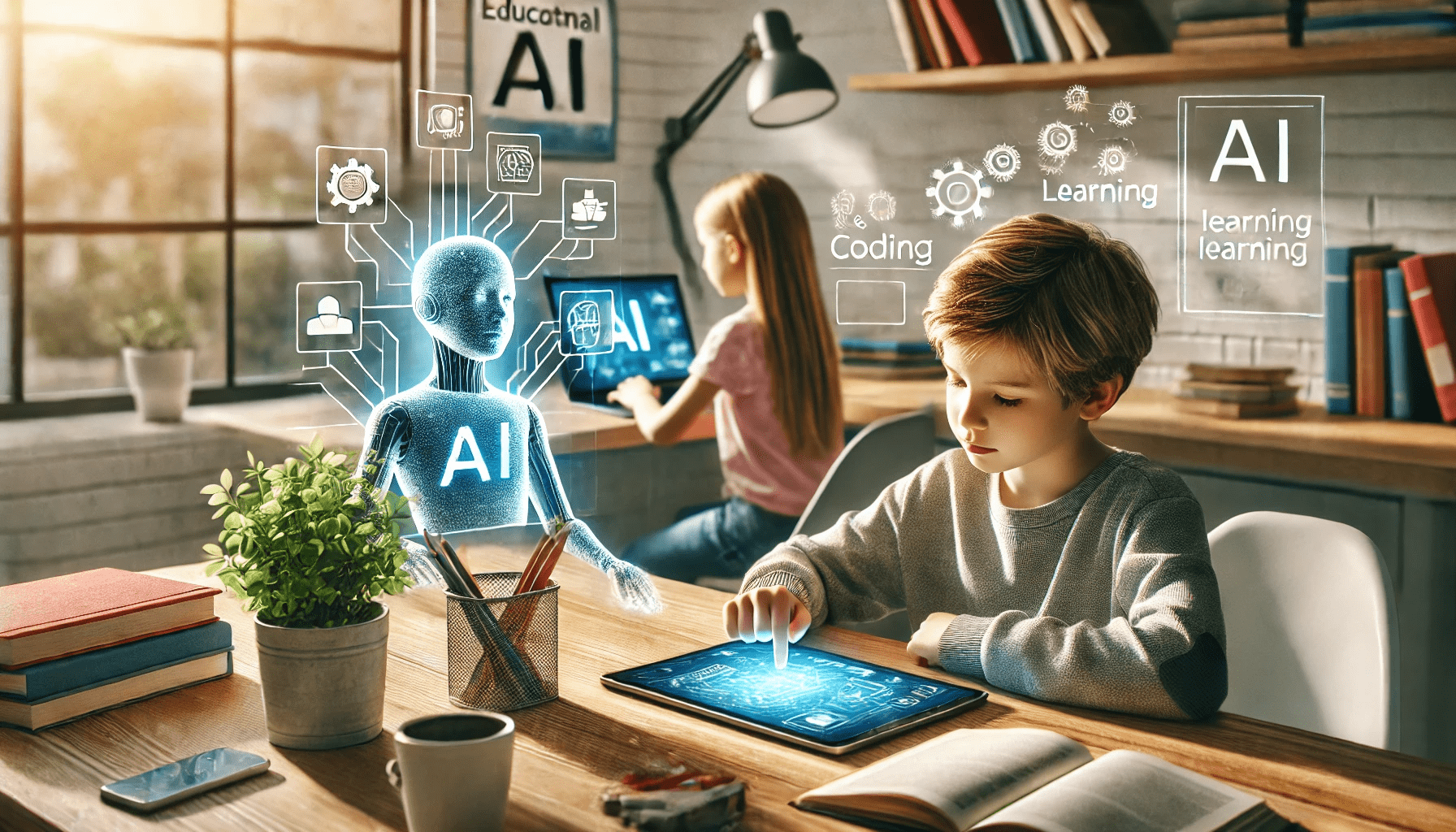Introduction
Artificial Intelligence (AI) is rapidly reshaping every major industry, and education is no exception. From adaptive learning platforms to AI tutors and automated grading systems, the impact of AI in education is transformative and far-reaching.
But beyond the buzzwords, how does AI help in education practically? What are the real-world use cases, benefits, and challenges? And how are schools, teachers, and students preparing for an AI-powered future?
In this guide, we’ll explore:
- How AI can be used in education and schools
- How AI helps students and teachers
- Key use cases and tools
- Benefits and concerns
- Future trends of AI in education
Let’s dive in.
1. How Does AI Help in Education?
AI in education refers to the use of machine learning, natural language processing (NLP), and data-driven algorithms to personalize learning, streamline administration, and enhance teaching methodologies.
In simple terms, AI learns from data — student performance, learning styles, and behavior — and then adapts or makes recommendations to improve outcomes.
Key Applications of AI in Education:
- Personalized learning paths
- Real-time student feedback
- Grading automation
- Intelligent content creation
- Virtual teaching assistants
- AI-powered language translation
Whether you’re a teacher trying to manage large classes or a student who learns better visually, AI helps tailor the experience for your unique needs.
2. How Can AI Be Used in Education?
A. Adaptive Learning Platforms
AI-powered platforms like Knewton, Socratic by Google, or Khan Academy’s Khanmigo customize content based on student learning styles, pace, and performance.
- If a student struggles with algebra, the system suggests more practice problems or explains it differently (video vs text).
- If a student excels, it skips basic topics and moves them ahead faster.
This ensures no student is left behind and advanced learners stay challenged.
B. Automated Grading and Assessment
Teachers spend hours grading homework, quizzes, and assignments. AI tools such as Gradescope or EvalAI can automate:
- Multiple-choice and short answers
- Essay evaluations (basic structure, grammar, clarity)
- Plagiarism checks
This allows educators to spend more time on instruction and student interaction rather than administrative work.
C. Virtual Teaching Assistants and Chatbots
AI chatbots like Jill Watson (created at Georgia Tech) or commercial tools like Duolingo’s AI assistant can:
- Answer student questions 24/7
- Schedule reminders for assignments
- Guide users through a lesson in real-time
This is particularly helpful for online learning environments or large-scale courses like MOOCs.
3. How Can AI Be Used in Schools?

AI in schools extends beyond the classroom into administration, security, and personalized student care.
A. Smart Scheduling & Timetables
AI systems can optimize class schedules based on:
- Teacher availability
- Student subject combinations
- Classroom resources
It eliminates clashes and improves resource utilization.
B. Attendance & Security
Facial recognition and biometric systems powered by AI can:
- Track attendance automatically
- Identify unauthorized entries
- Alert in real-time in case of anomalies
Though controversial in terms of privacy, it’s becoming common in advanced school campuses globally.
C. Student Progress Prediction
AI can analyze behavioral and academic data to predict:
- Which students are likely to drop out
- Who may need extra help
- Which subjects need more instructional time
This early intervention model enables schools to take proactive steps in improving student retention and success rates.
4. How Can AI Help Students?
For students, AI is more than just a tech trend — it’s a study buddy, a career coach, and sometimes a lifesaver.
A. Personalized Learning
AI-based apps adjust the difficulty and format of lessons based on how a student learns best — visual, auditory, kinesthetic, or reading/writing.
Popular platforms:
- Coursera and edX for adaptive learning paths
- Duolingo for language learning
- Photomath and Socratic for solving math/science problems with step-by-step explanations
B. Accessibility and Inclusion
AI bridges learning gaps for students with disabilities:
- Speech-to-text and text-to-speech tools help visually or hearing-impaired students
- AI translators make lessons accessible to students in different languages
- AI tutors offer 1:1 support to those who can’t afford private help
C. Exam Preparation & Career Guidance
AI tools can:
- Suggest practice tests based on weak areas
- Recommend career options based on strengths and preferences
- Analyze learning patterns to reduce stress and increase efficiency
For example, PrepAI and Mettl offer AI-powered assessments tailored to various exams and career paths.
5. AI in Teaching: A Powerful Ally for Educators
A. Curriculum Design
AI analyzes student performance data to recommend:
- Which topics need more emphasis
- What content delivery formats are most effective
- What time slots are best for teaching complex topics
This results in more informed teaching decisions and measurable outcomes.
B. Language and Literacy Development
Tools like WriteLab, Quill, and Grammarly help students:
- Improve writing structure, clarity, and grammar
- Get real-time suggestions as they write
Teachers can also monitor student writing progress without reading every sentence.
C. Classroom Management
AI helps identify behavior patterns like:
- Lack of participation
- Missed assignments
- Declining engagement
This allows timely interventions and supports both academic and emotional well-being.
6. Benefits of AI in Education
|
Benefit |
Impact |
| Personalized Learning | Tailors content and pace to individual student needs |
| Teacher Support | Automates admin tasks and grading |
| Accessibility | Supports diverse learning needs and disabilities |
| Data-Driven Insights | Improves outcomes through predictive analytics |
| Continuous Feedback | Real-time progress tracking and adaptive testing |
| Scalability | Reaches more students without compromising quality |
7. Future Trends of AI in Education
A. AI-Powered Classrooms
In the future, we may see AI-driven classrooms where:
- Virtual AI co-teachers assist human teachers
- Real-time analytics dashboards update teachers on student mood and comprehension
- Augmented reality (AR) combined with AI creates immersive learning experiences
B. Hyper-Personalized Learning Journeys
AI will not just adapt learning — it will design it:
- Custom curriculum per student
- Adjusted content based on brain scans or eye movement
- Emotion-aware teaching tools
C. AI and Emotional Intelligence (EQ)
AI tools will increasingly monitor student emotion and mental health using:
- Sentiment analysis from assignments or chats
- Facial expression tracking (with consent)
- Voice tone changes
These insights will help support students emotionally, not just academically.
8. Challenges of AI in Education
While the benefits are compelling, AI in education does face significant hurdles.
A. Data Privacy and Ethics
- Student data needs to be handled securely
- Biased AI models can reinforce inequality if not properly trained
B. Digital Divide
- Not all students or schools have equal access to AI tools and high-speed internet
- Rural or underserved regions may be left behind
C. Teacher Training and Resistance
- Many educators lack training in using AI tools
- Some fear AI may “replace” human teachers (though it is meant to assist)
9. How HW Infotech Can Help
At HW Infotech & Findthecoder , we specialize in developing custom AI-powered educational platforms, tools, and mobile apps that are:
- Student-centric: Adaptive, personalized, and engaging
- Teacher-friendly: Reduce manual work and improve analytics
- Secure and scalable: Built with privacy, performance, and future growth in mind
Our AI Solutions Include:
- AI chatbots and virtual tutors
- Adaptive test engines and learning paths
- School and classroom management systems with AI dashboards
- Integration with LMS platforms like Moodle or Google Classroom
If you’re a school, university, ed-tech startup, or NGO looking to leverage AI for impactful learning, HW Infotech can bring your vision to life.
Conclusion
AI is not just transforming education — it’s humanizing it. By tailoring learning to each individual, automating repetitive tasks, and supporting emotional and academic growth, AI is helping create more equitable, efficient, and engaging educational systems.
Whether you’re asking how can AI help students, or how can AI be used in schools, the answer is clear: the future of education is intelligent, inclusive, and powered by AI.


